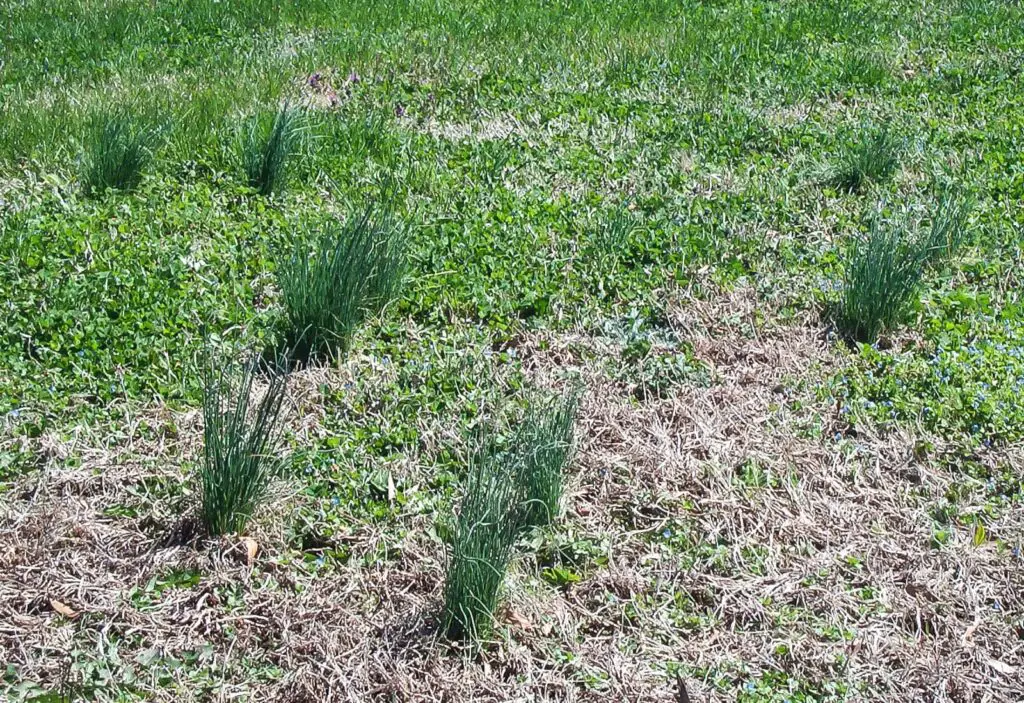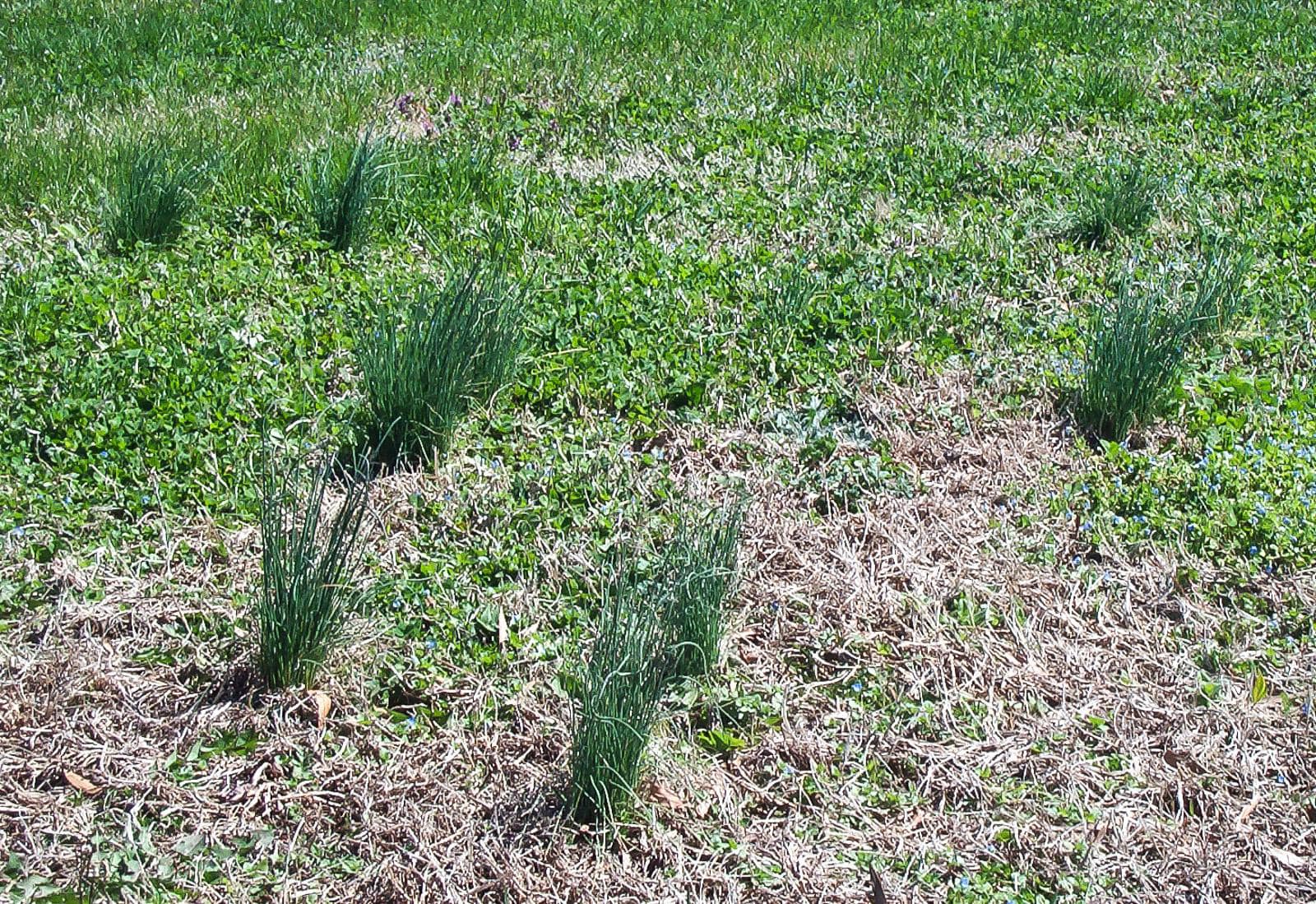While onions make great additions to kitchen gardens, they look highly out of place growing in your lawn. Wild onion, a winter perennial plant, can pop up in lawns or flower beds just like other weeds. Wild onion, also known as wild onion grass, definitely has a grass-like appearance, but it’s a fast grower. It will quickly outgrow the surrounding lawn, leaving you with a lawn that looks anything but uniform. The following information will help you get rid of wild onions.
What Is Wild Onion?
Wild onion (Allium canadense), like wild garlic, can be pesky weeds when they grow where they haven’t been cultivated. Wild onion grows from a bulb and prefers moist soil and full or partial sunlight. Both wild onion and wild garlic emerge from their bulb in fall and will grow during the winter and spring. The grass that emerges from the soil will have a strong onion smell. Wild onion plants will feature grass that grows in clumps or tall clusters. These plants can spread by seed or underground by their bulbs beneath the lawn.
How to Identify Wild Onions
Onion grass has a strong onion odor. Similarly, wild garlic produces grass with a strong garlic smell. Though the onion grass is similar in appearance to wild garlic, its grass blades are more flat and wide. Wild garlic leaves are hollow and grow longer than wild onion leaves. Wild onion leaves can grow between 8-12 inches. Multiple leaves emerge from a single wild onion stalk, unlike wild garlic, which produces a single leaf stalk that emerges from the ground. Wild onion also produces pink and white flowers in spring or early summer.



How to Get Rid of Onion Grass
Getting rid of wild onions can be challenging because their grass has a waxy coating that helps protect it from herbicides. Hand-pulling wild onion grass from lawns and flower beds may prove ineffective if any bulbs are left behind in the soil. Even so, killing wild onions is easy when you follow these tips:
Get Rid of Wild Onion Naturally
You can get rid of wild onion grass naturally, though it may be labor-intensive if you have an infestation in your lawn or flower beds. First, do not pull the grass out. This will not kill wild onions. The bulbs will simply continue to produce new onion plants. If you choose to remove wild onion grass naturally, you will need to dig out all the underground bulbs and remove the entire clump. Any missed bulb will eventually lead to more onion grass. Be sure to dig out the entire clump of onion grass, removing all bulbs. Once you completely remove the grass and bulb, you’ll be free of the onion grass problem. You may be able to kill wild onions using boiling water, but that will kill the surrounding grass.
Killing Wild Onion with Chemical Control
You can control wild onion weeds chemically, but broadleaf weed killers are often ineffective against wild onion grass and wild garlic. Plus, spraying wild onions has very little leaf surface area, and their waxy coating helps protect it against herbicides. Also, the bulbs of onion grass grow about six inches beneath the ground’s surface and have sufficient energy to withstand weed killer.
To get rid of wild onion grass with weed killer, you’ll likely want to resort to a non-selective herbicide. However, this type of weed killer will also kill other plants. So, applying via a handheld or backpack sprayer may not be the best option; the herbicide’s fine mist can kill other plants. Instead, you may want to wear rubber gloves and apply the weed killer to the wild onion grass individually (using an old paintbrush, for instance), coating its waxy leaves with sufficient weed killer to ensure its demise. Coat as much of the entire plant as you can. You may need to treat wild onion grass with more than one application. Treat wild onion weeds in late fall and then again in early spring.
For selective weed killers, try 3 Way Max or any 2- or 3-way herbicide containing Dicamba and Mecoprop-P.
How to Prevent Wild Onion
Growing a thick, healthy lawn helps prevent weeds like wild onion grass and wild garlic from growing in it. Pre-emergent herbicides, unfortunately, are ineffective against the wild onion plant. In addition to maintaining a healthy lawn, be sure to inspect your lawn routinely for signs of weeds like wild onion. The sooner you remove wild onion weeds, the more likely you can prevent them from spreading throughout your lawn and flower beds.
Wild Onion FAQs
What does wild onion grass look like?
Wild onion looks like green grass clumps growing along with other grass or plants. However, it tends to grow quickly and will outgrow the grass that surrounds it. It also produces pinkish-white flowers in early summer.
Will vinegar get rid of wild onion grass?
A large dose of white vinegar can often temporarily eliminate wild onion grass. However, it isn’t usually effective in killing underground onion grass bulbs. If the bulbs are left in the ground, they can grow next-generation plants and spread new bulbs.
What herbicide kills wild onion grass?
Most weed killers do not kill wild onions. You’ll need to choose a weed killer with certain active ingredients like dicamba and mecoprop. It may take a few years to eliminate wild onions from your yard completely. Apply in late winter and then again in early spring.
Why are onions growing in my yard?
If you have wild onions in your lawn, your lawn may be struggling. Wild onion weeds will find it difficult to grow in a healthy, dense lawn. Onion grass grows in lawns that are struggling.


